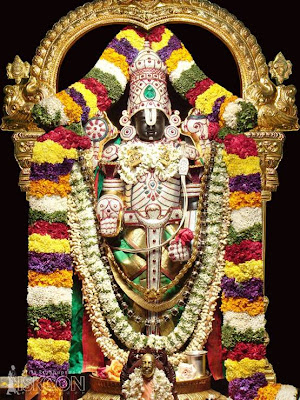









Establishment and legislative setting
The Beginning:TTD was established in 1932 as a result of the TTD Act of 1932. According to the act, administration of the temple was vested to a committee of seven members and overseen by a paid commissioner as appointed by the Madras Government. Advising the committee were two advisory councils - one composed of priests and temple administrators to aid the committee with the operations of the Tirumala temple and another composed of farmers for advise on Tirumala's land and estate transactions. The Act was revolutionary in that no specific qualification for temple administration was laid for the commissioner and the committee members. However the act was limited in scope in temple fund generation and usage for religious purposes.
Madras Hindu Religious and Charitable Endowments Act (1951) superseded the 1932 act and sections 80 to 85 of the act were devoted to administration of TTD. Section 80 laid that a Board of Trustees consisting of five members as appointed by the Madras state government will look after TTD with the members holding office for five years. The act provided for the appointment of an Executive Officer (EO) who would be responsible for the properties and operations of TTD, custody of records of jewels, estate, money and funds of TTD, arrange and record collection of income and payment of expenses as well as execute activities beyond budget sanctioned by board of trustees if it involved pilgrim safety or service and later justify his actions and obtain approval for his actions. According to section 85 of the Act, TTD was to utilize the funds for maintenance and operations of the temples, educational institutes, hospitals, choultries and rest-houses, veterinary hospital under the devesthanam control. Also provisions for water supply, sanitary arrangements, roads and communications, lighting and electricity were also included. Power to acquire land and immovable property was also added, provided TTD had state government permission. The Act also covered training of priests and religious training under devasthanam. Thus the 1951 Act gave more controls and mechanisms for fund usage.
Andhra Pradesh Charitable and Hindu Religious Institution and Endowments Act (1969) superseded the 1951 act with section 85 to 91 laying the provisions for TTD. Board of Trustees was expanded from five to eleven (11) with compulsory representation from certain communities. Three members from state legislative assembly, one person belonging to the scheduled castes and one woman member was made mandatory in the board of eleven whose term was fixed at three years. AP government was mandated with the appointment of EO and Deputy EO (DEO). Apart from the responsibilities defined in the previous Act, the major addition was that the devasthanam should promote study of Indian languages, should open and operate Sri Venkateswara University in Tirupati, should open and operate Hindu Dharma Prathishthanam. The objectives of Hindu Dharma Prathishthanam was promotion and propagation of Hindu Dharma by research, teaching, training and literature creation. Thus this Act was an improvement because of the 2 reason - inclusion of minority interests in the board of trustees as well as broadening the scope of the devasthanams to include study and dissemination of religious practices and knowledge.
TTD Act (1979): Though the previous Act was path-breaking, it ended up making TTD equivalent to smaller temples in the state and the 1979 Act rectified this issue. The rank of EO was defined and additional posts of Financial Adviser and Chief Accounts Officer (CAO) created. The Act further broadened the scope of Sri Venkateswara Sishatachara Vidya Samstha (renamed from Hindu Dharma Prathishthanam) to include promotion of Hindu culture.
A.P.Charitable & Hindu Religious Institutions & Endowments Act (1987) superseded the 1979 Act. The Board of Trustees was expanded from a maximum of eleven to fifteen while retaining previous minority and legislative representation (Section 96). The most controversial clause in the Act was abolishment of hereditary rights of temple priests as well as limited right to garner a share of the hundi proceeds.
After increased pressure from the priests over a long period of time,the AP government made an amendment to the Act in 2006 to discontinue these 2 controversial clauses.






